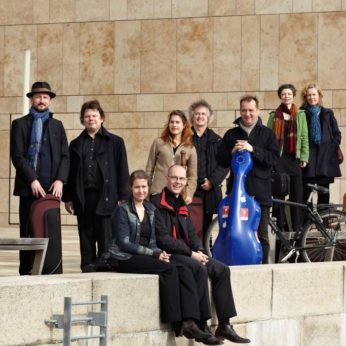Composer: Antonio Vivaldi (b. 1678 - d. 1741)
Performance date: 09/07/2016
Venue: St. Brendan’s Church
Composition Year: after 1723
Duration: 00:10:25
Recording Engineer: Richard McCullough, RTÉ lyric fm
Instrumentation Category:Baroque Ensemble
Instrumentation Other: 2vn (3vn, va, vc, db, thb, hpd)
Artists:
Bantry Baroque (Catriona O' Mahony, Aingeala de Burca [violins], Norah O' Leary [cello], Kaisamaija Uljas [theorbo]) -
[baroque ensemble]
Concerto Copenhagen (Antoine Toruncyzk [oboe], Fredrik From, Peter Spissky, Antina Hugosson [violins], Torbjörn Köhl [viola], Judith-Maria Blomsterberg [cello], Kate Hearne [cello, recorder], Marrias Frostenson [bass], Fredrik Bock [theorbo], Marcus Mohlin [harpsichord]) -
[baroque ensemble]

One
of Vivaldi’s most assiduous biographers has pointed out that over three hundred
years after the composer’s birth there is still a huge amount we do not know
about him. There are tantalising gaps in his biography and the chronology of
his music is still mostly guesswork. The most sobering thought is that we are
still unfamiliar as listeners with well over half his surviving music. There
are for instance 324 known solo concertos and 46 double concertos. As with most
music from the Baroque period, it is very often a matter of luck as to whether
the music survives.
In
Vivaldi’s time and earlier music circulated almost entirely in manuscript form
and most likely in the hand of a professional copyist. This situation was only
gradually changed by the rise of a vigorous music-publishing industry in
northern Europe, in particular in the Netherlands. The most famous of these was
Estienne Roger from Amsterdam, who used the engraving technique as opposed to
the more laborious type-setting in an archaic font used by the Italian publishers.
In the absence of copyright Roger would pirate manuscripts without the
composer’s consent (and correction of proofs) and publish them with impunity.
In
this haphazard environment it is almost surprising that any music survives at
all. The Vivaldi oeuvre was of course rescued by the extraordinary discovery in
the 1920s of the composer’s autograph manuscript books – now known as the Turin
Manuscripts – in two private libraries containing around 450 works, a large
proportion of which were completely unknown. A comparatively recent development
has been the general acceptance of the RV (Ryom Verzeichnis) catalogue
published by the Danish scholar Peter Ryom. This lists 740 works catalogued
according to instrumentation and genre rather than date of composition (which
are mostly unknown).
Vivaldi
was a spectacular violin virtuoso so all his violin concertos are a test of the
soloist’s virtuosity. In the double concertos the degree of virtuosity required
is extraordinary. In addition the two soloists play with the first violins in
the ensemble when not playing their solo parts. The vigorous opening ritornello serves as a robust framework
for the solo passages, whose virtuosity reaches unimaginable heights. In the Largo the intertwining melodies of the
two soloists dance gravely above the slow tread of the strings. The vigorous Finale gives the soloists more
opportunity to display their skills.
Copyright © 2025 West Cork Music. All rights reserved.
Designed and developed by Matrix Internet